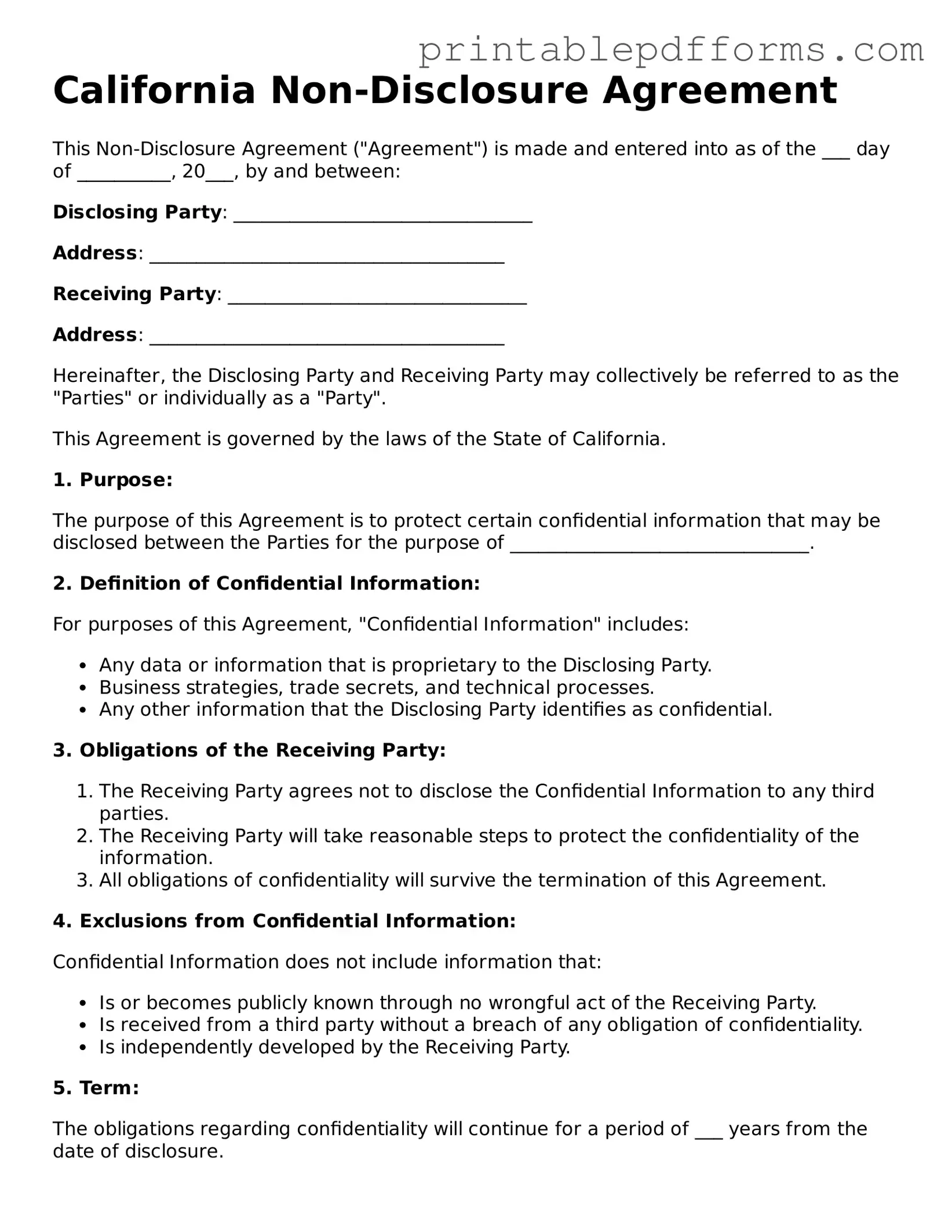California Non-Disclosure Agreement
This Non-Disclosure Agreement ("Agreement") is made and entered into as of the ___ day of __________, 20___, by and between:
Disclosing Party: ________________________________
Address: ______________________________________
Receiving Party: ________________________________
Address: ______________________________________
Hereinafter, the Disclosing Party and Receiving Party may collectively be referred to as the "Parties" or individually as a "Party".
This Agreement is governed by the laws of the State of California.
1. Purpose:
The purpose of this Agreement is to protect certain confidential information that may be disclosed between the Parties for the purpose of ________________________________.
2. Definition of Confidential Information:
For purposes of this Agreement, "Confidential Information" includes:
- Any data or information that is proprietary to the Disclosing Party.
- Business strategies, trade secrets, and technical processes.
- Any other information that the Disclosing Party identifies as confidential.
3. Obligations of the Receiving Party:
- The Receiving Party agrees not to disclose the Confidential Information to any third parties.
- The Receiving Party will take reasonable steps to protect the confidentiality of the information.
- All obligations of confidentiality will survive the termination of this Agreement.
4. Exclusions from Confidential Information:
Confidential Information does not include information that:
- Is or becomes publicly known through no wrongful act of the Receiving Party.
- Is received from a third party without a breach of any obligation of confidentiality.
- Is independently developed by the Receiving Party.
5. Term:
The obligations regarding confidentiality will continue for a period of ___ years from the date of disclosure.
6. Governing Law:
This Agreement shall be governed and construed in accordance with the laws of the State of California.
7. Signatures:
IN WITNESS WHEREOF, the Parties have executed this Non-Disclosure Agreement as of the date first above written.
Disclosing Party Signature: _________________________ Date: _____________
Receiving Party Signature: _________________________ Date: _____________
